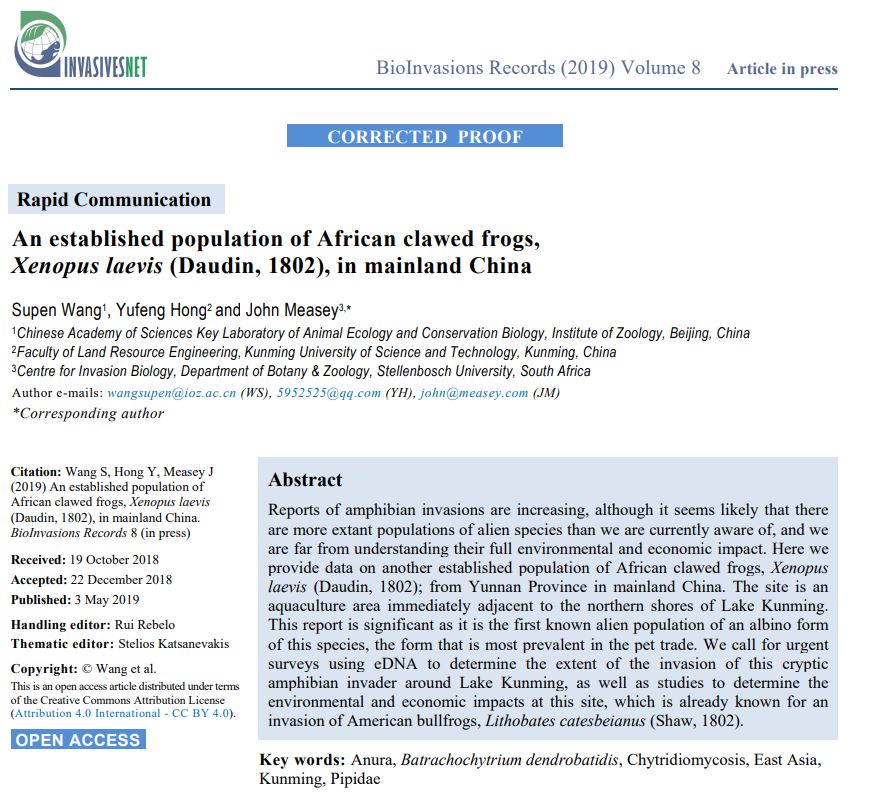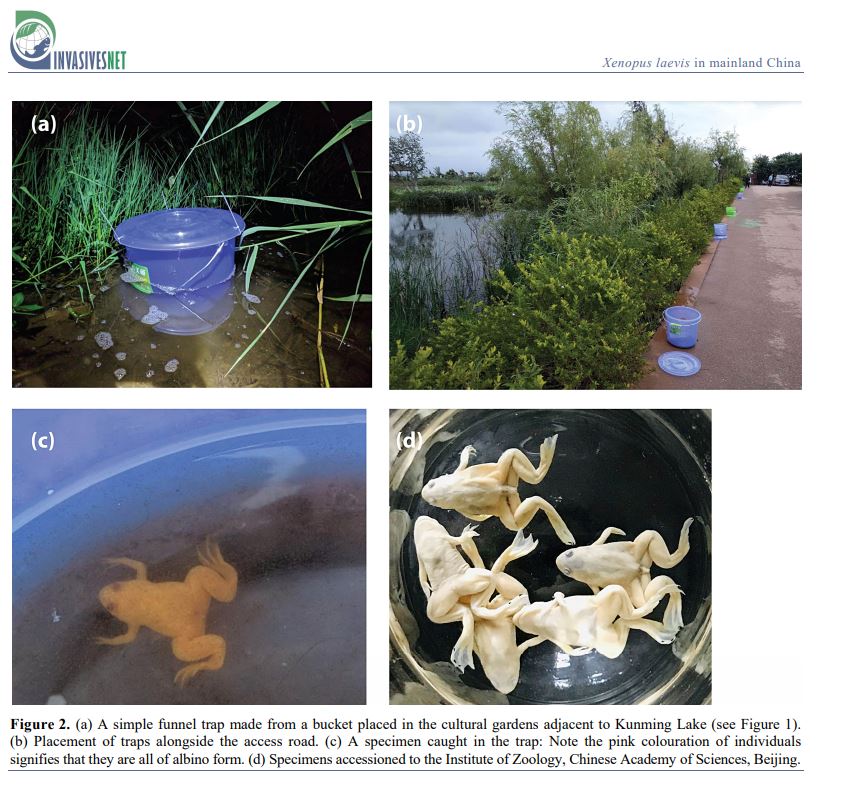African Clawed Frogs in China
Some of you may remember that I visited China in June last year (if not, see the blog post here). Today the resulting paper with my Chinese collaborator, Supen Wang, was published in BioInvasions Records.
There are a couple of interesting points about this new invasion:
1. It's the first reported for mainland China. Not surprising perhaps as China is the source of most of the pet Xenopus laevis that are pumped around the world at the moment (that was the subject of another paper - see here).
2. This is the first report of an albino invasive population. All of the others around the globe feature the 'wild-type' African clawed frogs that most of you will be familiar with. However, in the pet trade, it is albinos that dominate.
Here's a piece I wrote for the CIB website:
INVASIVE FROG CLAIMS ANOTHER CONTINENT
A new population of African clawed frogs (Xenopus laevis) has become established on mainland China, according to a new publication by C·I·B Core Team Member, John Measey. Working with colleagues from the Chinese Academy of Sciences, Measey trapped a site near the city of Kunming, Yunnan Province. The African clawed frogs they found were all albinos, the most common form in the pet trade. Previous work by Measey had shown that the vast majority of African clawed frogs moving around the world in the pet trade originate from China.
Invasive populations of African clawed frogs are known from Europe, North and South America and were previously only known from Japan in Asia. This discovery now places an invasive population on continental Asia with the potential for a much larger invasion in this area. These frogs are known to heavily impact local amphibian and invertebrate populations.
Trade in the African clawed frog started in the 1930s following their use as the first pregnancy test. The species was so easy to keep that it then became the standard laboratory amphibian all over the world, a status it continues to enjoy today. Breeding in laboratories has become so successful that animals are no longer exported from South Africa. Since the 1980s, however, this species has become very popular in the pet trade. Now hundreds of thousands of animals are shipped around the globe destined to become aquarium pets.
The researchers used molecular methods to check whether members of the invasive population carried the fungal chytrid pathogen, known for decimating amphibian populations globally. All frogs caught tested negative. However, the site is known for having a population of American bull frogs, which the team heard calling as they set out the traps. It is unknown how these two globally invasive frogs interact.
“The site is on the edge of Lake Kunming, possibly allowing these frogs access to a large are in southern China”, said Measey. “We were surprised to find an established population as this area fell outside the global climate model predicting suitable areas.”
Read the full article here:


